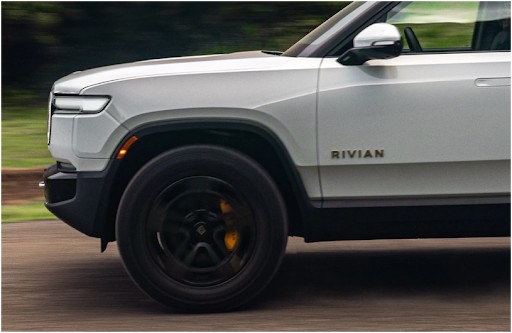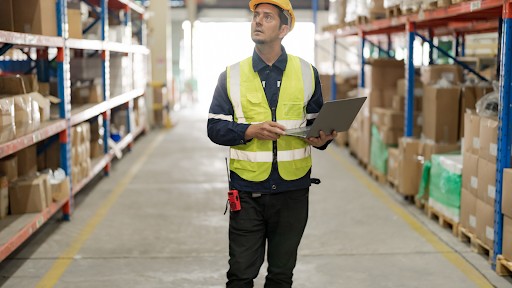Now Reading: Rivian Software Update: What Developers Love and Drivers Feel
-
01
Rivian Software Update: What Developers Love and Drivers Feel
Rivian Software Update: What Developers Love and Drivers Feel

When Your Truck Updates Like a Phone—And Actually Gets Better. As someone who lives in systems architecture and backend infrastructure, I’ve grown up alongside a lot of “over-the-air” promises. Some of them fall flat. Others quietly revolutionize how we interact with machines. Rivian? It’s sitting firmly in that second camp. I didn’t expect to be impressed by a vehicle software rollout, but the first time my R1T installed a Rivian software update overnight and gave me faster charging, better ride tuning, and a smarter security layer without touching a bolt—I had flashbacks to continuous integration best practices. This is dev-ops for EVs. And it works.
Let’s break down what Rivian’s doing right (and where it’s still iterating), through the eyes of someone who’s spent years scaling infrastructure and watching bad update pipelines eat systems alive.
How Often Does Rivian Do Software Updates?
Rivian’s cadence isn’t just frequent—it’s smart. On average, you can expect updates every 4–6 weeks, with smaller patches and diagnostics between larger feature drops.
These are true OTA (over-the-air) updates—no dealer visits, no USB drives, just scheduled background installs like a well-orchestrated rolling deployment. What’s more impressive is the type of updates Rivian rolls out. We’re not talking UI tweaks or “general stability improvements.”
These are end-to-end system changes: new drive modes, refined energy distribution, better sensor utilization, and full-stack security improvements. From an engineering perspective, that implies robust modularization and update containers with rollback safety nets—exactly what you want in a mission-critical system like a moving vehicle.
What Are the Upgrades for the 2025 Rivian?
The 2025 Rivian software updates showcase how hardware and software co-evolve. Each release pushes the boundary of what Rivian’s architecture can do—without changing the hardware.
Let’s deconstruct a few standout versions:
2025.18 – The Secure Platform Update
- Multi-Factor Drive (MFD): Adds an authentication layer before shifting out of Park. Think of it as 2FA for your drivetrain. It can use your app, smartwatch, or passcode—great UX meets real security.
- Energy App 2.0: Real-time subsystem-level energy monitoring. Want to see how much HVAC is draining during idle? Now you can.
- DC Fast Charging Optimization: Updated algorithms now peak at ~215 kW for Gen 2 packs. That’s a backend performance gain achieved by better thermal control and charge curve targeting.
- Visual Enhancements: Cleaner UI rendering and faster infotainment response times—likely from thread optimizations or new GPU command trees.
2025.14 – User Experience as a Priority
- Spotify DJ integration: Tied directly into your Rivian account—custom playlists driven by behavior patterns.
- Enhanced Driver Profiles: Settings persistence now spans display layout, route preferences, and climate controls. This suggests Rivian is running a stronger state-sync backend—probably tied to driver accounts via tokenized cloud storage.
2025.10 + 2025.06 – Mechanical Behavior via Software
- Low-Speed Comfort Mode: Rewrites how the suspension system handles dynamic terrain at lower speeds—likely tuning PID loop parameters for dampening.
- Highway Assist, Rally Mode, Auto-Tilting Mirrors: More proof that Rivian uses sensor fusion and edge computing to give the driver context-based assistance. These updates are probably containerized modules rather than full-stack re-flashes.
2024.51 – Reliability at the Edge
- Improved Cold Weather Charging and Smart Turn Signals (lane-aware cancelation) show attention to detail. These aren’t just neat—they’re signs of an agile product culture feeding real user data back into update cycles.
Does Rivian Have a Future?

Image source- rivian.com
From a software engineer’s standpoint? Absolutely—and it’s already here. The fact that Rivian can safely and consistently deliver functional updates over the air to tens of thousands of vehicles without bricking systems is huge.
That’s not marketing fluff. It takes infrastructure planning, a stable CI/CD pipeline, and tight QA cycles to get right. Most legacy automakers still haven’t figured this out. More importantly, Rivian’s control over the entire software stack—from embedded vehicle logic to cloud services—means it can innovate without vendor bottlenecks.
That’s Tesla’s winning move, and Rivian is using the same blueprint with arguably cleaner UI/UX thinking. Throw in their growing ecosystem (charging network, fleet partnerships, robust Gen 2 platform), and this isn’t a startup scrambling for product-market fit—it’s a systems-minded company with longevity baked into its architecture.
How to Make the Most of the Rivian Software Update
 Image source- rivian.com
Image source- rivian.com
Here’s how I approach each update like I would a new production build.
Step 1: Update Smart
Keep your vehicle above 50% battery and parked within a strong Wi-Fi zone. It’s not just a download—it’s a firmware and configuration patch that runs across multiple subsystems. Treat it like a live deployment: eliminate weak links before pushing.
Step 2: Explore the New Tools
Open the Energy App and use it for 3–5 days. Watch how power is used across trips. It’s like running Grafana dashboards for your vehicle. Are your heated seats killing range? Is your Gear Guard recording all night? The data’s there.
Step 3: Set Up Multi-Factor Drive
As a guy who’s had API keys stolen more than once, I love this. Go to Vehicle Settings > Security and enable MFD. It may delay your start by 3 seconds, but a cloned fob or spoofed app session won’t drive your vehicle away.
Step 4: Compare Ride Quality
Hit a test loop after low-speed tuning updates. I’m not exaggerating—the difference in handling post-2025.10 was noticeable enough that I messaged a product engineer on LinkedIn just to ask how they pulled it off.
FAQ: Engineering Answers Without the Buzzwords
How often does Rivian do software updates?
Rivian pushes OTA updates every few weeks, often every 4–6 weeks. Larger releases like 2025.18 are more feature-dense, while minor updates fix known issues or improve stability in the background.
What are the 2025 Rivian upgrades?
From a software architecture POV:
- Security (MFD)
- Real-time diagnostics (Energy App 2.0)
- Faster charge curve logic
- Driver profile persistence
- Sensor-augmented driving modes
All rolled out without a service visit. That’s real value.
Can these updates cause bugs?
Yes—but rarely. Some users reported infotainment freezes or Bluetooth weirdness post-update, but these issues tend to be transient. Rivian’s fast patch rollout minimizes downtime, and rollback safety is clearly built in.
Does Rivian have the backend strength to scale?
From what I’ve seen, yes. Their update infrastructure, cloud-to-vehicle sync, and telemetry feedback loops point to a scalable, resilient architecture. That’s not easy to build—but Rivian has clearly invested the engineering time.
Final Call: This Isn’t Just a Truck—It’s a Platform
In the dev world, we talk about treating infrastructure as code. With Rivian, you’re basically treating your vehicle like a platform with a deployment pipeline. That means your truck isn’t just what you bought—it’s what it continues to become.
The Rivian software update process isn’t window dressing. It’s the backbone of a future where EVs stay relevant, adaptable, and—dare I say it—fun to debug.
So update regularly, explore deeply, and treat your Rivian like the software-powered marvel it is. The hardware’s great. But it’s the code that makes it come alive. And if you’re wondering what’s next? So am I. And that’s the best part.













